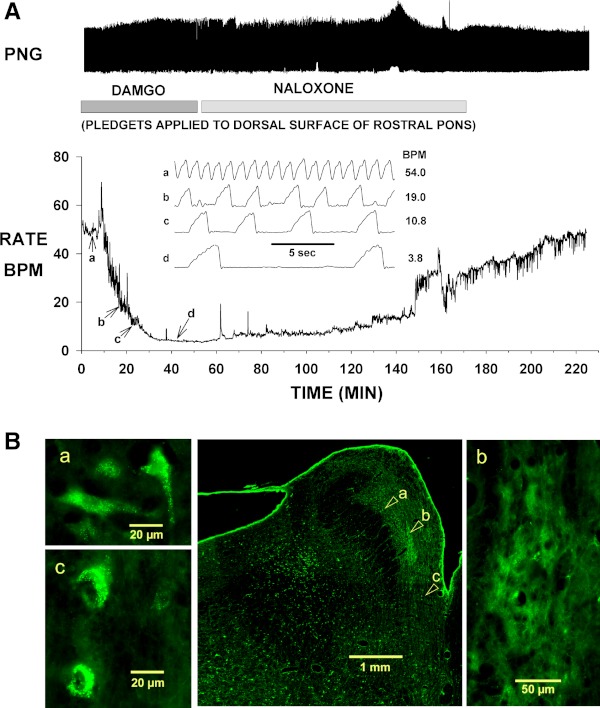Fig. 2.

Preliminary data suggesting that μ-opioid receptors (μORs) in the dorsolateral pons may be the targets of systemically administered opioids that produce bradypnea at clinically relevant concentrations. A: example of the effects of DAMGO-saturated pledgets applied to the dorsal surface of the pons between the inferior colliculus (IC) and the superior cerebellar peduncle (CP) of a dog on PNG and fB. Note marked bradypnea and increases in TI and TE, with a small increase in peak PNG. Naloxone (NAL)-saturated pledgets gradually reversed the DAMGO-induced bradypnea. B: distribution of μOR immunoreactivity (μOR-ir) in the rostral dorsal lateral pons showing the parabrachial/Kölliker-Fuse (PB-KF) complex. Center: fluorescence photomicrograph of a coronal section that shows a relatively high level of μOR-ir lateral to the superior cerebellar peduncle (arrowheads a–c) corresponding to the lateral PB complex. a and c: Higher-magnification images near arrowheads a and c show discrete points of high-density μOR-ir on cell somas. b: High level of μOR-ir of a filamentous network, possibly dendritic, near arrowheads b.
